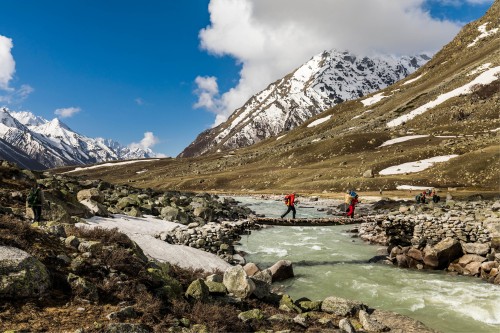From the ones everyone has heard of to some less known yet just as stunning, World Expeditions chooses below eight of the most incredible ‘lost cities’ around the globe…
1) Palenque, Mexico
A prime example of a Mayan sanctuary of the classical period, Palenque was at its height between 500 and 700 AD. Although 90 per cent of the settlement still lies buried under the jungle, the elegance and craftsmanship of the buildings, as well as the lightness of the sculpted reliefs with their Mayan mythological themes, attest to the creative virtuosity of the civilisation.
Ancient civilisations of Mexico (12 days) departs September-March
2) Tikal, Guatemala
Guatemala’s crown jewel is one of the most fascinating Mayan sites to visit, with six temples still dominating the landscape much as they did a thousand years ago. Its remoteness means it rarely feels too busy with tourists, while thanks to its jungle setting some of the temples are still being uncovered and you can watch archaeologists at work!
Central American Journey (24 days) departs September-March
3) Volubilis, Morocco
Located at the foot of the Atlas Mountains in a sweeping valley filled with olive and almond trees, Volubilis was the westernmost extremity of the Roman Empire. Only partly excavated, it is protected by UNESCO for being ‘an exceptionally well preserved example of a large Roman colonial town on the fringes of the Empire’, with glorious mosaic floors, temples, aqueduct, baths, gates and a basilica.
Historic cities of Morocco (8 days) departs year round
4) Persepolis, Iran
Persepolis was founded around 518 BC, although it took more than a century before it was finally completed. The wealth of the Persian empire was evident in all aspects of its construction and today, as you enter through the massive Gate of All Nations, you can still get a sense of why: a huge terrace faces you and in every part of the complex you can see intricate carvings.
Tashkent to Isfahan (21 days) departs April-October
5) Angkor Wat, Cambodia
Originally a Hindu, then subsequently a Buddhist temple, Angkor Wat is the largest religious monument in the world and has become a symbol of Cambodia, appearing on its national flag since 1850s. Stretching over 400 square kilometres, the whole Angkor complex encompasses various capitals of the Khmer Empire, which flourished from the 9th to 15th centuries AD.
Bike, Hike and Kayak Cambodia (12 days) departs year round
